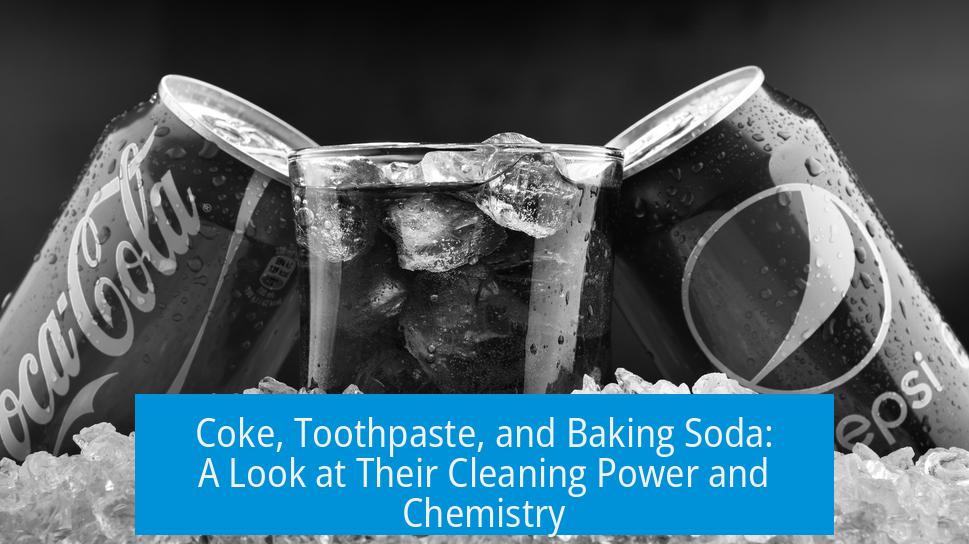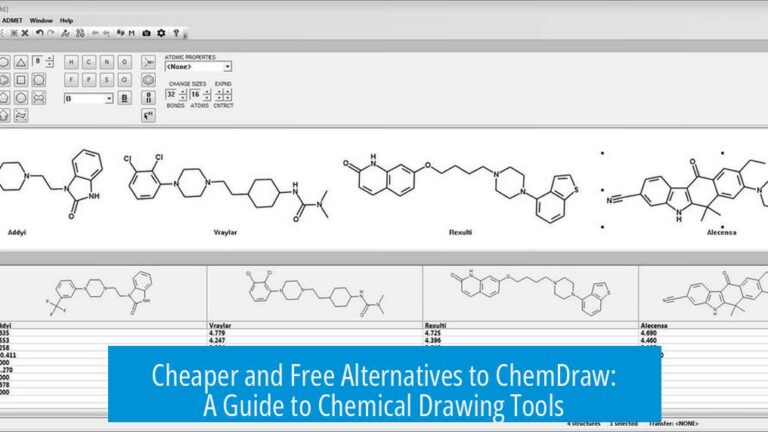Coke + Toothpaste + Baking Soda: Understanding the Chemistry Behind the Cleaning Mystery
The combination of coke, toothpaste, and baking soda produces a brief cleaning effect primarily due to acid-base neutralization, mild abrasive action, and mechanical agitation from evolving carbon dioxide gas. This synergy makes the mixture seem powerful but its efficacy is short-lived and mostly superficial.
Common Misconceptions About DIY Cleaning Mixtures
Numerous household tips claim that mixing acids with baking soda creates extraordinary cleaning power. However, fizzing caused by these mixtures is mainly carbon dioxide generation. The bubbling fools people into thinking the solution actively cleans beyond mild abrasion.
When baking soda, a weak base, meets coke’s acidic phosphoric acid, they neutralize partially, producing water, carbon dioxide, and some carbonate ions. The fizz is thus simply a physical effect, not a sign of superior chemical breakdown.
How Toothpaste Contributes to Cleaning
Toothpaste is a formulated mixture containing several cleaning agents:
- Abrasives: Hydrated silica, calcite, aluminum oxide, or calcium pyrophosphate act like fine sandpaper, mechanically removing surface residue.
- Surfactants: Soap-like compounds such as sodium dodecyl sulfate (SDS) reduce water surface tension. This improves penetration and helps lift organic debris.
- Oxidizers: Fluoride compounds, often mistaken for fluorine, function as mild oxidizers, degrading organic contaminants chemically similar to how chlorine works.
These combined properties make toothpaste effective in polishing and breaking down organic stains on surfaces like pots and pans. It essentially performs gentle abrasion and detergent cleaning simultaneously.
The Role of Baking Soda (Sodium Bicarbonate)
Baking soda in this mixture reacts in two main ways:
- Chemical Reaction: Baking soda in water creates hydroxide ions which induce saponification. This converts insoluble fats (as in coffee or food stains) into soluble soaps, easing their removal.
- Mild Abrasive: Undissolved baking soda particles provide a gentle scrubbing effect, enhancing mechanical cleaning for about 10 seconds before dissolving.
Once acid is introduced—like in coke—the bicarbonate dissolves quickly. The abrasive effects vanish rapidly as the chemical neutralization proceeds.
Coke’s Function in Cleaning
Coke serves as an acidic solvent due to its low pH (~2.5), containing primarily phosphoric acid. This acidity is effective at breaking down oil-based residues, resin, and metal surface oxidation.
Phosphoric acid is also used industrially as a rust converter and corrosion inhibitor. The acid helps loosen organic and inorganic deposits but is partially neutralized when mixed with baking soda, reducing its effectiveness.
Interactions of the Three Components
When combined, coke, baking soda, and toothpaste interact as follows:
- Acid-Base Neutralization: Baking soda neutralizes coke’s acid to form carbon dioxide gas, water, and some carbonate salts.
- Gas Evolution: The release of CO2 creates bubbling and fizzing, which mechanically agitates the surface and helps dislodge particles.
- Abrasive and Detergent Action: Toothpaste abrasives physically scrub surfaces, while its surfactants lift residues. Fluoride oxidizes organic contaminants.
- Temporary Effectiveness: The fizz-induced agitation intensifies scrub action but lasts only about 10 seconds before the soda dissolves and the acid is neutralized.
In essence, the “mystery” fizz cleans by combining mild chemical etching, mechanical scrubbing, and gas bubbling that physically vibrates surfaces, dislodging dirt.
Why the Fizz Appears More Powerful Than It Is
Many people associate vigorous bubbling with effective cleaning. The rapid CO2 formation creates visible activity that convinces users the mixture is breaking down stains chemically.
However, this fizz primarily results from neutralization of bicarbonate by cola’s acid and does not mean deep or thorough cleaning. The abrasive elements and oxidizers in toothpaste handle most residue removal.
Summary Table of Components and Their Roles
| Component | Role in Cleaning Mixture |
|---|---|
| Coke | Acidic solvent with phosphoric acid; breaks down oils and resins; pH ~2.5 |
| Toothpaste | Mild abrasive using hydrated silica or calcite; detergent (surfactants like SDS); oxidizer (fluoride) loosening organic residues |
| Baking Soda | Mild abrasive for initial scrubbing; basic environment enabling saponification; dissolves quickly limiting lasting abrasion |
| Combined Effect | Partial neutralization produces CO2 bubbles; gas mechanically agitates surface; enhances abrasiveness briefly (~10 seconds); efficacy quickly diminishes |
Key Takeaways
- Coke’s acidity breaks down oils and organic residues but is neutralized by baking soda.
- Toothpaste provides fine abrasives, surfactants, and oxidation to help remove contaminants.
- Baking soda contributes short-lived abrasion and chemically promotes fat breakdown via saponification.
- Fizzing results from acid-base reactions producing CO2, aiding mechanical cleaning by surface agitation.
- The combined mixture is a temporary, superficial cleaner—not a powerful chemical agent.
What happens chemically when Coke, toothpaste, and baking soda are mixed?
The acid in Coke and alkaline baking soda neutralize each other, releasing carbon dioxide gas. Toothpaste adds mild abrasives and detergents. The gas bubbles create a brief mechanical scrubbing effect on surfaces.
Why does the fizzing from this mixture seem effective but isn’t?
Fizzing is mostly gas release that agitates the surface briefly. It looks like strong cleaning, but the actual effect mainly comes from abrasives in toothpaste and mild chemical action. The effect lasts about 10 seconds.
How does toothpaste contribute to cleaning in this mix?
Toothpaste contains fine abrasive particles and surfactants that help lift dirt. It also contains fluorine, which acts as a strong oxidizer to break down organic materials.
What cleaning properties does Coke provide in this combination?
Coke is acidic due to phosphoric acid. It dissolves oil and resin buildup but is partly neutralized by baking soda. Its low pH helps to weaken stains on surfaces.
Is baking soda’s role more than just fizzing in the mixture?
Baking soda mildly abrades stains and chemically breaks down organic fats via saponification. However, its abrasive effect is short-lived once it dissolves and the acid neutralizes it.





Leave a Comment